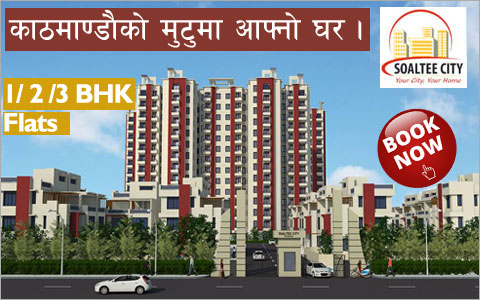National News
"Twelve land pooling projects are under way, while 11 others are in the pipeline"
As many as 12 land pooling projects spanning over 260 hectares of land are being implemented within Kathmandu Valley and 11 projects with 405 hectares are coming up, says the Ministry of Urban Development.
According to a report ‘Inclusive Cities: Resilient Communities’ published by the MoUD, land pooling projects are also being implemented outside the Valley. The Town Development Act, 1988 authorises town development committees to undertake land pooling schemes. The act states that land pooling can be carried out in any part of the town planning area with the consent of minimum 75 per cent of the landowners. Land pooling can also be initiated by local levels such as municipalities as per the Local Self-Governance Act, 1999.
“Land pooling projects help minimise premature conversion of farmlands and control urban sprawl. It is an effective tool to provide housing, infrastructure, and services in an efficient manner. Even difficult and dispersed areas in the urban fringe can be served through land pooling,” said the report.
One of the most notable advantages of land pooling as a planning tool is that there is no need to acquire land. It is sufficient for the land pooling project to own the land for the purpose of planning and development, which reduces the cost of land development. The government has decided to develop four new satellite cities in as many cardinal directions of the Valley through land pooling system. A satellite city proposed to the northeast of Kathmandu will spread over nearly 1,00,000 ropanis of land. The process for the construction of the proposed 71.93 km outer ring road in the Valley is also under way in line with the same system.
According to the MoUD, the first phase of the construction of the outer ring road will commence along 6.6km Chobhar — Satungal stretch from the forthcoming fiscal and cover approximately 8,000 ropanis of land area belonging to over 14,000 landowners. Of the total length of the ring road, Kathmandu, Lalitpur and Bhaktapur will have a coverage of 35.08 km, 15.80 km and 21.05 km respectively.
“Land pooling aims to produce residential plots of proper shape and size, equipped with essential infrastructure such as roads, piped water supply and sewerage system, and electricity, among others. In a land pooling project, individual plots are combined into one large estate, which is subdivided rationally after planning a new road layout. Landowners contribute a certain portion of land for open space, roads, and reserved plots,” read the report.
source:the himalayan tims, 16 June 2017
- 9th Nepal Buildcon International Expo 2024
- Real Estate Expo 2023
- NRB raises housing loan limit to encourage home constructions
- Nepal Rastra Bank (NRB) Monetary Policy 2080-2081
- New Price of Land in Kathmandu Metropolitan City, Nepal
- Capital Gains Tax Rate on Real Estate Transactions in Nepal 2080-81 ( 2023/24 )
- Kathmandu metropolis implements free parking policy for commercial buildings and hospitals

![[X]](https://www.housingnepal.com/images/popup-close-button.png)







































































































































































































































































































































































































 Facebook
Facebook
 Delicious
Delicious
 Digg
Digg
 Reddit
Reddit
 Stumble Upon
Stumble Upon









